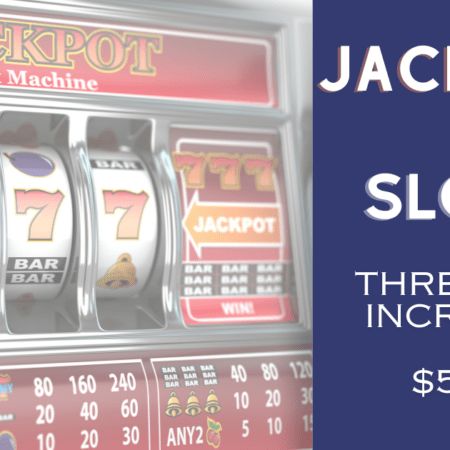If you are new to gambling, you might be wondering how to read and interpret betting odds. Odds Gambling are numerical expressions that indicate the probability of an event happening and the potential payout you can get if you bet on that outcome. Understanding betting odds, including negative odds, is essential for making informed decisions and maximizing your chances of winning. In this blog, we will explain the different types of betting odds. How to convert them to implied probabilities, and how to use them to compare different bets.

Types of Odds in Gambling
Betting odds are numerical expressions that indicate the probability of an event happening and the potential return for a wager. Read odds confidently as we delve into the various types commonly used in the gambling industry, including decimal, fractional, American, and implied probability. Each type comes with its own set of advantages and disadvantages. And we’ll guide you on how to convert them from one format to another using simple formulas.
Decimal Odds
Decimal odds are the most popular and widely used type of betting odds. They show how much money a bettor will win for every unit they stake, including the original stake. For example, if the decimal odds are 2.50, it means that a bettor will win $2.50 for every $1 they bet. The decimal odds are easy to understand and compare, and they can be used to calculate the implied probability of an event by dividing 1 by the decimal odds.
Fractional Odds
Fractional odds are the traditional and oldest type of betting odds. They show the ratio of the amount a bettor will win to the amount they stake, excluding the original stake. For example, if the fractional odds are 3/2, it means that a bettor will win $3 for every $2 they bet. Fractional odds are more common in horse racing and some European markets, and they can be used to calculate the implied probability of an event by dividing the denominator by the sum of the numerator and denominator.
American Odds
American odds are also known as moneyline odds or US odds. They show how much money a bettor will win or lose for every $100 they stake, depending on whether the odds are positive or negative. For example, if the American odds are +150, it means that a bettor will win $150 for every $100 they bet. If the American odds are -200, it means that a bettor will lose $200 for every $100 they bet. American odds are more common in North America and some Asian markets. They can be used to calculate the implied probability of an event by dividing 100 by the absolute value of the American odds and adding or subtracting 1 depending on whether the odds are positive or negative.
Implied Probability
Implied probability is not a betting odds per se, but rather a way of expressing the likelihood of an event happening based on the betting odds. Calculated by taking the reciprocal of decimal odds or using the formulas for fractional and American odds, the implied probability is crucial for assessing value bets. Dive into comparisons of different betting odds, including point spread, and gain insights into recognizing odds 100 and odds -100. Understand how implied win probability can be your guide in identifying bets with higher implied probability than the actual chance of an event occurring.
How to Calculate Potential Payouts and Returns
Different odds formats, such as decimal, fractional, and American, represent the probability of an outcome and the amount of money you can win from a bet. To calculate the potential payout and return from different odds formats, you need to know how to convert them to a common format and apply a simple formula.
Converting fractional odds to decimal odds
To transform fractional odds into decimal odds, it’s essential to recognize that the odds represent the probability of a specific outcome. The process involves dividing the numerator (the first number) by the denominator (the second number) and then adding 1. For instance, if you have fractional odds like 3/1, the calculation would be 3/1 + 1 = 4.
Converting American odds to decimal odds
To convert American odds into the decimal format, employ distinct formulas for positive and negative odds. Positive American odds indicate the potential winnings for every 100 units wagered. Convert them to decimal odds by dividing the American odds by 100 and adding 1. For instance, +200 becomes 200/100 + 1 = 3. On the other hand, negative American odds signify the amount needed to bet to win 100 units. Convert these to decimal odds by dividing 100 by the absolute value of the American odds and adding 1. For example, -150 becomes 100/150 + 1 = 1.67.
Calculating Potential Payout and Return from Decimal Odds
Once you have converted all the odds to decimal odds, you can calculate the potential payout and return from a bet by multiplying the decimal odds by your stake. For example, if you bet 10 units on an outcome with decimal odds of 4, your potential payout is 10 x 4 = 40 units, and your potential return is 40 – 10 = 30 units.
Tips and Strategies for Finding the Best Value of Odds Gambling
Betting odds are a way of expressing the probability of an event happening, and they can also indicate how much money you can win if you bet on that event. However, betting odds are not always easy to understand, and they can vary depending on the source and the type of bet. Here are some tips and strategies for finding the best value and maximizing your profits from betting odds.
Compare Different Sources
One of the most important things to do when betting on odds is to compare different sources and find the best offer. Different bookmakers, websites, and platforms may have different odds for the same event, and some may offer better payouts, bonuses, or promotions than others. By comparing different sources, you can find the best value for your money and increase your chances of winning.
Understand the Types of Odds Gambling
Odds are a way of expressing the possible outcomes of a bet. They can be expressed in different formats: decimal, fractional, and American. Decimal odds indicate the total amount you get back, including your original bet. For example, if you bet 1 unit on decimal odds of 2.5, you get back 2.5 units. Fractional odds indicate the profit you make relative to your original bet. For example, if you bet 2 units on fractional odds of 3/2, you make 3 units profit. American odds indicate how much you need to bet or win for 100 units, depending on whether they are positive or negative. For example, if you bet 100 units on American odds of +200, you win 200 units. If you bet 200 units on American odds of -200, you win 100 units.
Consider the Implied Probability
To understand the odds, you need to calculate the implied probability. This is the odds’ way of telling you how likely the event is. You can get it by dividing 1 by the odds in decimal form. For instance, if the odds are 2.5, the implied probability is 0.4 or 40%. This helps you compare the odds with the actual probability and see if there is value in placing a bet on that event or not. You want to look for events that have a higher implied probability than the true probability, as this means you have an advantage. Positive odds are when the decimal odds are above 2. Which means that the return is more than the amount you wager. Positive odds show that the event is less probable than not.
Use a betting calculator.
Another thing to do when betting on odds is to use a betting calculator to help you determine how much to stake and how much to expect to win. A betting calculator is a tool that allows you to enter the type of bet, the odds, and the stake, and it will calculate the potential payout and profit for you. A betting calculator can also help you convert between different types of odds and compare different scenarios. You can find many free online betting calculators that can help you with your betting decisions.

I hold the prestigious role of Head of Content at Best United States Casinos, where I lead the charge in content creation and strategy. Fueled by my profound passion for casinos and backed by years of industry experience, I am a powerhouse of knowledge. My dedication shines through in my mission to craft captivating and informative content that resonates with casino enthusiasts across the globe. Whether it’s uncovering the latest trends or diving into the nuances of gameplay, I am committed to delivering top-notch content that keeps audiences engaged and informed.








